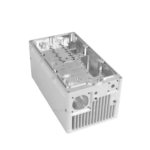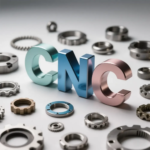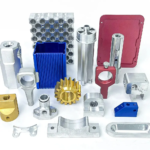In the world of modern manufacturing, precision CNC (computer numerical control) machining has become a cornerstone technology, allowing companies to produce components with incredible precision and efficiency. As the industry continues to evolve, the need for precision manufacturing methods becomes critical, so companies must understand the advantages offered by precision CNC machining services. This article takes an in-depth look at the multifaceted benefits of CNC machining, its applications in various fields, and the driving technologies behind its success.
H2: Understand precision CNC machining
Precision CNC machining involves using computer-controlled tools to create parts and products that meet tight tolerances. The technology uses a variety of processes, including milling, turning, drilling and electrical discharge machining (EDM). The machining tool is guided by a computer program that dictates speeds, feed rates and cutting paths, resulting in exceptional accuracy and repeatability.
H3: The mechanics behind CNC machining
CNC machines operate according to a series of programmed commands that determine the machine’s operation. The process starts with a 3D model, usually created using CAD (computer-aided design) software. The CAD file is then converted into a format readable by the CNC machine (usually a G-code file), providing the machine with instructions on how to move, what tools to use, and how to manipulate the material.
CNC machining can process a variety of materials, including metals, plastics, composites, and wood. The ability to handle a wide range of materials significantly expands the application potential of precision CNC machining. In addition, modern CNC machine tools are equipped with advanced features such as multi-axis motion, allowing manufacturers to create complex shapes and contours that were previously difficult to achieve.
H2: The many advantages of precision CNC machining
H3: Improve precision and accuracy
One of the most significant advantages of CNC machining is that it provides unparalleled precision. CNC machines execute commands based on programmed data, minimizing human error for consistent and repeatable results. Parts produced through CNC machining can achieve tolerances of up to ±0.001 inches, making them an excellent choice for industries that require high precision, such as the aerospace, medical, and automotive industries.
H3: Improve efficiency and speed
CNC machining simplifies the production process, resulting in faster turnaround times. While traditional manual machining processes are often labor-intensive and time-consuming, CNC machines can run continuously to produce large numbers of parts in a very short time. Additionally, once created, programs can be reused in future production runs, further increasing operational efficiency.
H3: Cost-effectiveness
Although the initial investment in CNC machinery may be large, the long-term cost savings can be substantial. The high throughput rates and lower labor costs associated with CNC machining can reduce overall manufacturing overhead. Additionally, the precision of CNC machining reduces material waste because parts are manufactured to exact dimensions with minimal scrap.
H3: Versatility and flexibility
CNC machining services offer manufacturers the versatility to handle different projects in different industries. Whether manufacturing complex automotive parts or custom medical devices, CNC machining can be adapted to specific project requirements. Additionally, the ability to easily modify CAD designs enables rapid prototyping and customization to meet the changing needs of the market.
H3: Improve safety and working conditions
Using CNC machines creates a safer working environment. Manual machining often involves dangerous tools and processes that can pose risks to the operator. By automating these operations, CNC machining reduces the need for human intervention during hazardous tasks, thereby reducing workplace accidents and improving overall safety.
H3: Integration with advanced technology
Precision CNC machining fits well with the advancements of Industry 4.0, especially the integration of IoT (Internet of Things), AI (artificial intelligence) and big data analytics. These technologies enhance the capabilities of CNC machining by enabling predictive maintenance, real-time monitoring and improved quality control. This integration ultimately reduces costs, improves product quality, and improves operational efficiency.
H2: Cross-industry application
H3: Aerospace industry
In aerospace, accuracy is non-negotiable. Components must meet strict specifications and tolerances to ensure safety and performance in flight. CNC machining services play a vital role in manufacturing lightweight and durable components such as brackets, casings, and engine components that are critical to aerospace technology.
H3: Automobile industry
The automotive industry also benefits from CNC machining services for component manufacturing ranging from engine components to interior trim components. The ability to quickly create prototypes allows automakers to efficiently test and refine their designs. Additionally, CNC machining helps produce small, complex parts that improve vehicle performance.
H3: Medical industry
In the medical field where precision and reliability are crucial, CNC machining services are indispensable. They produce complex medical devices, implants and surgical tools tailored to specific patient needs. The high precision provided by CNC machining ensures medical components function properly, helping to improve patient outcomes.
H3: Manufacturing and Industrial Engineering
Machinery and industrial product manufacturers use CNC machining to produce everything from small components to large machine parts. The ability to manufacture durable and precision components helps improve machine performance and extend equipment life.
H3: Electronic products
In electronics, CNC machining is used to create housings, circuit boards, and other components with tight tolerances. The rapid prototyping capabilities of CNC machines allow for flexible design modifications to keep pace with the rapidly evolving electronics market.
H2: The future of precision CNC machining
H3: Technological innovation
As technology continues to advance, the future of precision CNC machining looks promising. Continued innovation in software, artificial intelligence and robotics will drive efficiency improvements, lower production costs and increase precision. Expect to see developments such as autonomous CNC machining systems incorporating machine learning algorithms for continuous optimization.
H3: Sustainable manufacturing
Sustainability is now a key consideration in the manufacturing process. CNC machining services can promote more sustainable practices by reducing waste and energy consumption compared to traditional machining methods. The development of environmentally friendly materials and biodegradable composites will further enhance the sustainability of CNC machining.
H3: Customization and personalization
Demand for customized products continues to rise. CNC machining services can easily customize production to meet customer preferences while maintaining accuracy and cost-effectiveness. As consumers increasingly seek personalized goods, CNC machining will play an important role in various industries.
in conclusion
Precision CNC machining services offer a wide range of advantages to numerous industries. From unparalleled precision and efficiency to reduced costs and improved safety, CNC machining is an essential technology driving modern manufacturing forward. As the industry continues to evolve and embrace technological advancements, CNC machining will remain the cornerstone of innovation, providing manufacturers with the tools they need to thrive in a highly competitive market.
The potential for CNC machining is enormous, and as we look to the future, its integration with emerging technologies will only enhance its capabilities, paving the way for more complex manufacturing solutions.
FAQ
Q1: What materials can be used for CNC processing?
CNC machining can process a variety of materials, including metals (such as aluminum, steel, and titanium), plastics (such as PVC, ABS, and nylon), composites, and even wood. Material selection depends largely on the application and desired performance of the final component.
Q2: How to ensure accuracy in CNC machining?
CNC machining achieves high precision through a computer-controlled process that minimizes human error. CNC machines operate according to programmed instructions, controlling every aspect of the machining process and allowing tolerances as tight as ±0.001 inches.
Q3: Can CNC machining be used for mass production?
Yes, CNC machining is very effective for both low-volume and mass production. Once a program is established, it can be reused across multiple production runs, ensuring consistency and efficiency in manufacturing large numbers of parts.
Q4: How does CNC machining promote sustainable development?
CNC machining can help reduce waste through precise cutting and shaping methods that minimize material wastage. Additionally, the technology enables energy-efficient manufacturing practices and the potential use of sustainable materials, thus contributing to greener production processes.
Q5: Is CNC machining more cost-effective than traditional machining?
While the initial investment in CNC machinery can be high, the long-term savings often outweigh these costs. CNC machining reduces labor costs due to automation, increases production speed, minimizes waste, and improves the quality of parts, resulting in cost-effective manufacturing solutions.
Daguang focuses on providing solutions such as precision CNC machining services (3-axis, 4-axis, 5-axis machining), CNC milling, 3D printing and rapid prototyping services.










